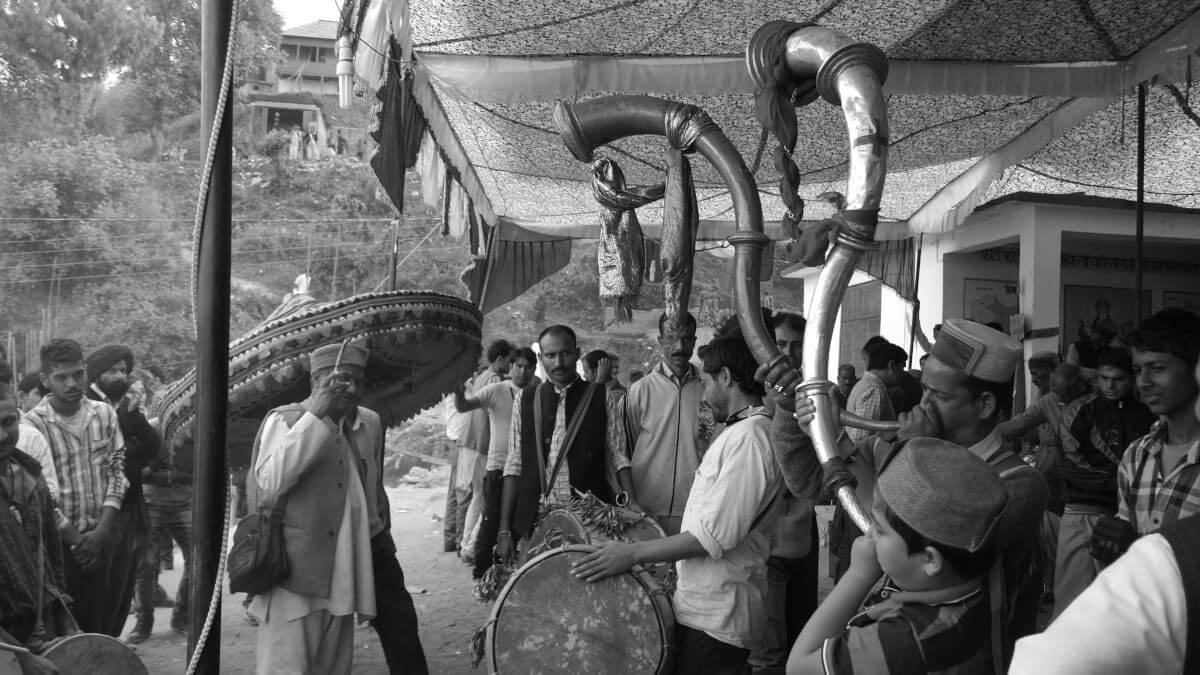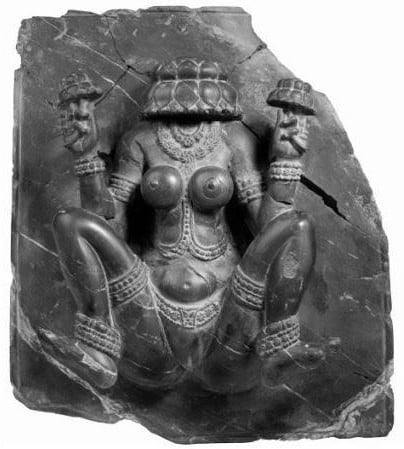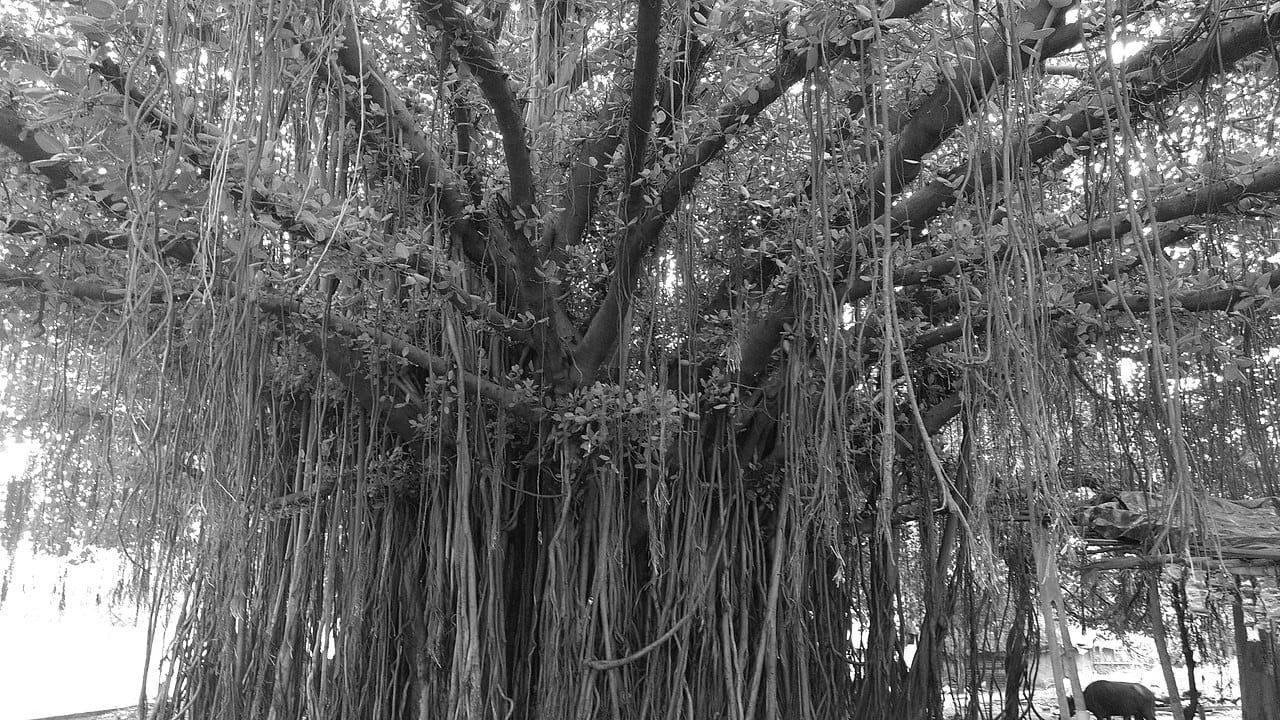Discover Myths and Legends of the Mool Mahunag Annual fair of Karsog, where devotees pray, play music, carry the murtis (god statues) and feast. When on a motorbike, you are right there, in the middle of it all. You become part of it; you are not only passing by, and you never know what to aspect behind the next bend. As we ride towards Bakhari, a small hamlet in Mahu Panchayat circle about 13 kms from Churag on Shimla-Karsog road we end up in a hustle and bustle.
In this Article
When you motorbike travel you are with the people, generosity on every bend, random acts of kindness by strangers all along the way makes riding all the more special.
A procession is coming towards us. We could feel the excitement in the air. It is a very big day for the village folk, who come in huge numbers to seek the blessings from their GodMahunag. The vibe is great, we love festivals.
Over 180 village deities (Devtas) with their followers from near and far are on the move. We drive with the flow, or is against it – the murtis go home to their villages, but bikes, cars, buses and trucks are still moving towards the festival…
Finally we reach the fair, held on a rectangular piece of land surrounded by tall pine trees, about 2 km away from the temple at a height of about 2,000 meters. Today the deva of Mahunag temple, who is believed to be Karna or Karan from Mahabharata, comes out of the temple to meet his people. The Mahunag Temple is dedicated to Lord Karan, a legendary warrior, son of the Kunti and the sun god. Karan is known locally as Mahunag. According to legend, he turns into a “mahu” (bee) and rushes to help when the believers ask him for.
Interestingly, a majority of committed devotees are connected to the legal profession, including several eminent judges. They trust Karna’s blessing to help with legal issues and family disputes.
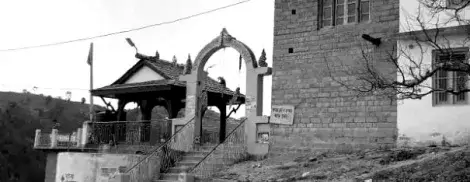
People also have great faith in Mahunag especially in the cure of snakebites. It is stated that no one dies of snakebite if Mahunag is invoked.
Karsog Valley falls in the ancient temple belt of the Suket Kingdom of Himachal Pradesh. According to district records, the present temple was built by Raja Shyam Sen of Suket in 1664.
He was Lord Karan’s staunch devotee and even ascribed his escape from Mughal custody to his miraculous powers.
MYTH: Mahunag safes Raja Shyam Sen
Legend has it that the deity once appeared in the form of a honeybee (mahu) to help a king (Raja Shyam Sen) of the region who was imprisoned by a Mughal ruler. The king was kept in a large drum as a prisoner. The honeybee who entered the drum asked the king for a place to stay in the drum. The king told the honeybee that he is ready to give him a place and if he could secure his release, he would give him half his kingdom.
Mahunag then took the form of a chess player and challenged the Mughal ruler in chess. The ruler promised anything he wanted if could defeat him. After winning the game, Mahunag asked for the large drum in which the king was imprisoned.
Thus Mahunag secured the release of the king. It is said that Mahunag then revealed his true form to the king and he settled at Bakhari.

According to a variant, Raja Shyam Sen of Suket was imprisoned by the Mughal emperor of Delhi and while in captivity he prayed to Mahunag who appeared to him in the form of a bee and promised an early release.
LEGEND : A farmer finds the holy idol
Legend has it that several hundred years ago a farmer found an idol of Lord Karan while tilling his land. He carried it home and kept it in safe custody of his wife. Some days later, one of his sons died mysteriously. The farmer approached the village elders and asked them the reason behind his sudden misfortune. During the course of the conversation, he revealed to them that he had found a silver idol buried in his fields. The elders advised him to bring out the idol and have it installed with proper ceremony. Through community effort, a temple was built on a hilltop near Bakahari village and five bighas (1 Acre equals to 5 bigha ) of land was allocated to it.
Variant:
One day, a farmer was ploughing his field in the village Shaindal when the poignant knob of his plough struck an image, which came out. The idol was taken to the village Bhamnala about 2 kms from Bakhari. But, God refused to stay there and went to Bakhari. On reaching the village there was lightening and a tree caught fire. God stayed there and a temple was erected. The fire caused by the lightning was kept alive and still smoulders round the clock, but, it is not known as to when and by whom the temple was constructed.
Myth of the name Karsog:
The story of Karsog is as old as time, the name itself comes from the words ‘kar’ and ‘shok’ meaning ‘daily mourning’. The myth from the Mahabharata goes that the village was terrorized by a rakshasa (demon) who ate a villager every day causing for daily mourning. But during the exile of the Pandavas, Bhima saved the village from the rakshasa by offering himself.
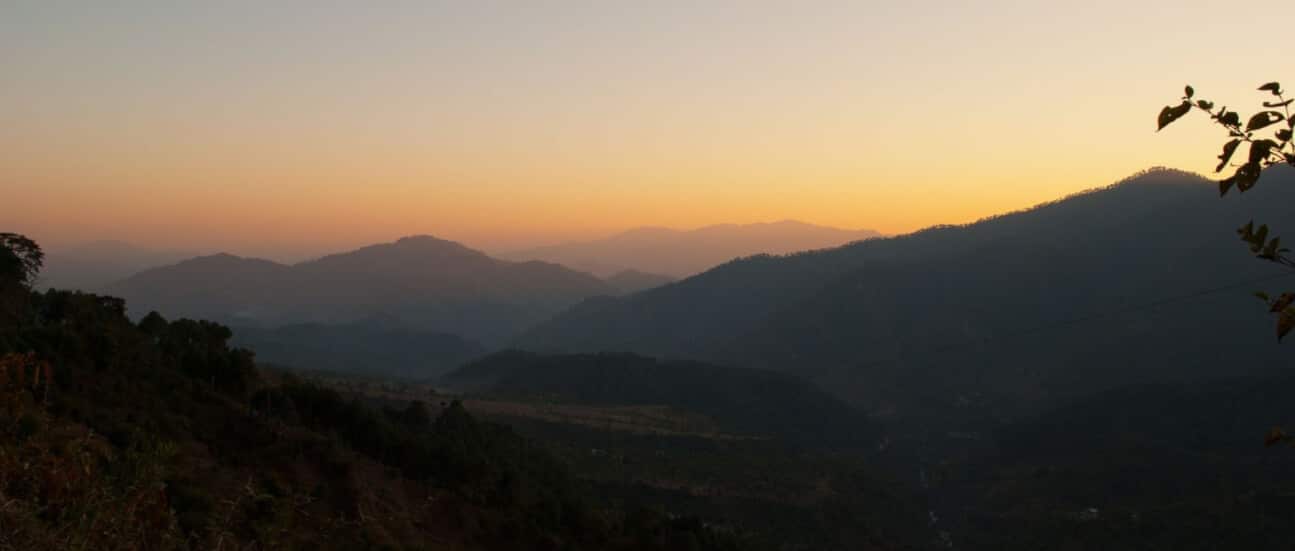
Celebration of Mool Mahunag Annual fair of Karsog


This annual mela is held every Sanskranti, this daymarks the first day of the sun’s transition into the sun sign Capricorn or Makara in Hindi. The festival is dedicated to the Sun God. The idol of Mahunag J weighs about 10 kg and is made of silver its only to be bought outside the temple at this festival and on Mahunags birthday on the 18th of July.
Another story behind the fair is also an interesting one:
Once Britishers took a local to its custody in Shimla. The resident prayed to Lord Mahunag to help him. It is believed that Lord Mahunag appeared inside the jail cell and helped him get out of the jail. To express his gratitude towards Mahunag Ji, he organized a ceremony. The ceremony is still conducted today in the form of Mool Mahunag Annual fair of Karsog every year.
The festival lasted five days, we witness the departure of the deities in colorful, roaring processions. Accompanied by singing village peope, colorful embroidered canopies and countless musicians with drums, bells, fanfares and trumpets, like the Ransinga.
The holy murtis are also accompanied by their gurus and brahmins. Ecstatically the medium trembles, babbles and shakes another man who endures the rough spectacle. The possessed one has short hair and a long rasta that he repeatedly pulls and tugs rhythmically, he dances as if he were listening to his own music and following his, or is it his Gods rhythm?
Some devotees give him raw rice and orange flower petals, which are also pressed into our hands and should be swallowed whole. it’s prasad – consecrated food.

As this group leaves, we are accompanied to eat by a journalist with perfect British accent Mr. Rakshan (Hindi for protection, how appropriate!) is he also is a treasure trove of information about the festival.
There are carpets on the lawn on which we sit barefoot, of course only after washing our hands. Enormous pots by the open fire are bubbling, and many voluntaries rush around. In five days they cooked for over 40,000 devotes, 2,200 kg of rice, plus dahl, lentils, beans, chickpeas, sweet pumpkin, the volunteers keep going around serving the visitors of the festival with large spoons from enormous tin bowls … today everyone should eat prasad.

So we eat the vegetarian holy temple food with our bare hands in the presence of hundreds of Hindu gods, while I think to myself “hopefully no diarrhea”, but the food should be beneficial and the intestines probably knew that too, and did not cause any problems.

Knowledgeable Raksha tells us about the temple saints who are chosen as children and are thrown into a river nearby, if they do not drown they are raised to be saints who are introduced to secret teachings and rituals, otherwise they will just be reborn – Nobody has to drown among the Hindus, it’s karma.
Raksha also gives us mythical storiez about Karnas legendary generosity from the Mahabharata:
Giving away his Armour (Kavach Kundala) in alms to Indra in disguise of a Brahmin was an act which could be exercised only by a true Donor.
Karna also stands for generosity, the story tells how Karna lies dying on the battlefield while his father Surya and Arjuna fall into a debate about who is superior among their sons.
They decide to test Karna’s generosity and appear to him as brahmins asking for alms. Karna says that shortly before his death he had nothing to give. One of the Brahmans noticed that he had some gold in his teeth. Karna immediately grabs a stone and knocks out his teeth with it. Which proved his superiority.
“Knowing that giving up his Armour, his most vital and unique weapon at times of war would lead to even losing his life and still giving it away was the greatest display of Generosity. A true donor is SELFLESS, TRUE TO HIS WORD, BEARS THE CONSEQUENCES WETHER GOOD OR BAD FOR HIS DONATIONS, KIND, AND JUST. We may find people in Mahabharata with some of these qualities but Karna was a man who possessed each of these in abundance.
Hence he is called as the ” Danveer or Great Donor” in Mahabharata.”
Karna never held regrets for giving away whatever was his:
Once Arjuna argued with Krishna: “why do you keep on praising Karna so much? What is it that he has and I lack? “Krishna then turned two mountains into gold, and gave Karna and Arjuna each and told them to divide the gold to the nearby villagers equally. Arjun began digging the gold from the mountain and started dividing amongst the villagers. But no matter how much he dug and gave away the mountain didn’t reduce even a bit and Arjuna now was starting to get tired.
Karna on the other hand called two villagers and told them to divide the gold equally amongst the villagers and went away.
To this whole incident Krishna explained Arjuna that he didn’t give away the gold willingly but hesitatingly. He was not content that the villagers without doing anything should get so much amount of gold while he on the other hand has to be one giving it away. BUT Karna at the same time did not care about the value of the gold even for a bit but did what he was told and went ahead on his way.
Offerings to the deity are in silver as Lord Karan had himself given away all his gold in charity, and, therefore, gold offerings are not accepted.
Generosity is a vital part of the Hindu community and we were able to experience it. The simplicity of the feast, the beauty all around and the positive energy is touching our soul and our senses. धन्यवाद dhanyavad دھنیہ واد

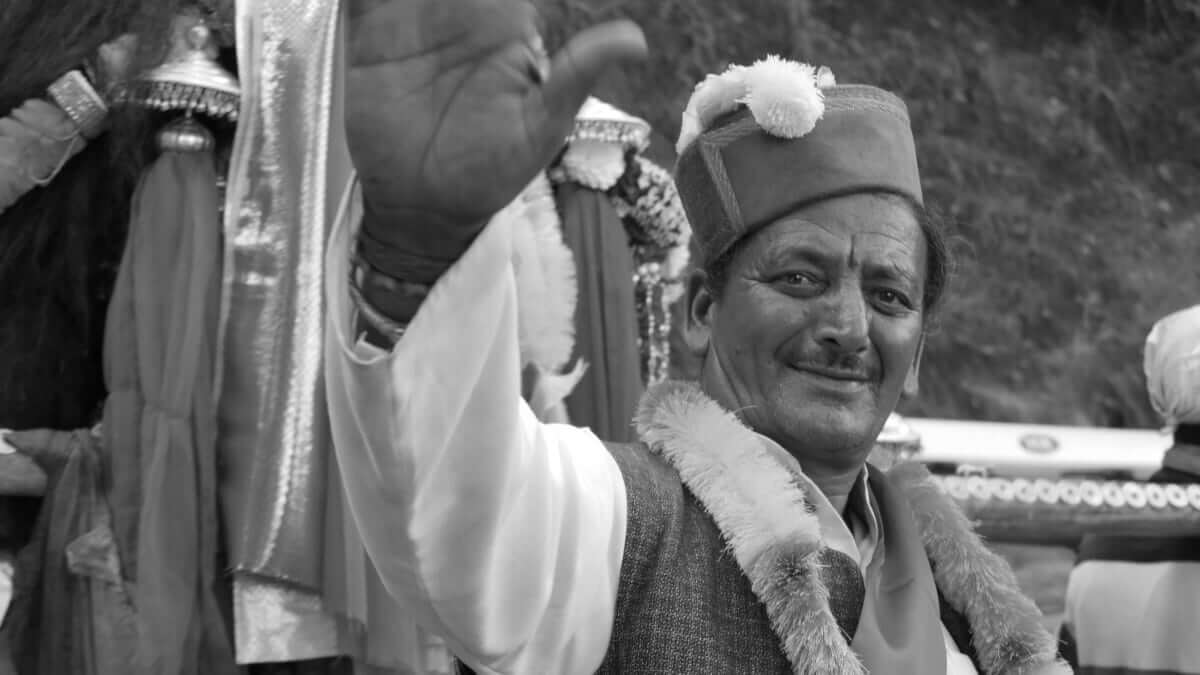
Thank you people at the Mool Mahunag Annual fair of Karsog and हिमाचल प्रदेश HimachalPradesh
~ ○ ~
Keep exploring:
Works Cited & Multimedia Sources
- https://theoktravel.com/when-the-devta-comes-to-pay-you-a-visit-mool-mahunag-annual-fair-karsog/
- https://www.hindu-blog.com/2019/03/mahunag-karna-of-mahabharat-worshipped.html
- https://hpgeneralstudies.com/mahunag-fair-of-karsog-himachal-pradesh/
- Devata dance video: https://www.youtube.com/watch?v=yn2CcNzuCWk
